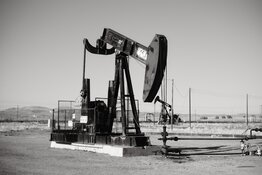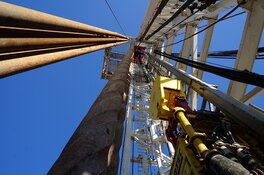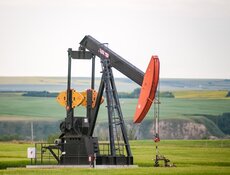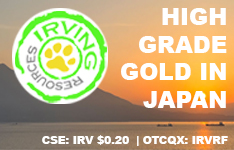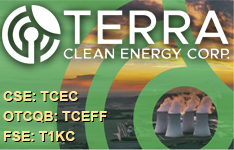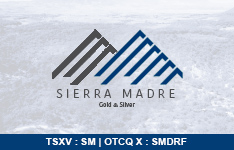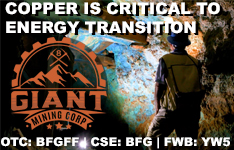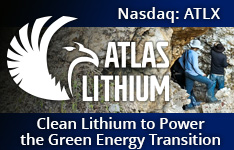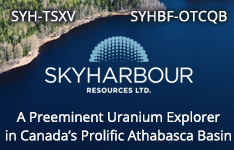The global oil market is currently navigating a complex landscape of rising inventories, mixed supply signals, and shifting investor sentiment. Despite headline-grabbing inventory builds and ongoing trade tensions, several analysts and institutions are calling the bearish sentiment in oil overdone, suggesting that geopolitical risk, resilient demand, and inflation-hedging strategies could support prices in the medium term.
In a research note published May 28 and cited by Bloomberg, Goldman Sachs analysts including Daan Struyven recommended long-term allocations to gold and oil for investors managing 60/40 equity-bond portfolios. Highlighting oil's historical role in delivering positive real returns during periods of equity and bond underperformance, the note stated, "Following the recent failure of U.S. bonds to protect against equity downside and the rapid rise in US borrowing costs, investors seek protection for equity-bond portfolios." The analysts called oil and gold "critical" hedges against inflation shocks, with oil particularly suited to guard against supply disruptions.
The backdrop for these recommendations includes significant builds in oil inventories. Data from Kayrros and OilX show global crude stockpiles have risen by approximately 170 million barrels over the past 100 days. Antoine Halff, co-founder of Kayrros, noted that while China led the surge in storage, "there is also growing evidence of oversupply worldwide." This aligns with OilX data, which showed inventory builds occurring at the fastest pace since 2020 during the three months through April.
Refined Products Show Diverging Trends
However, refined fuel inventories have diverged from crude trends. According to the US Energy Information Administration, diesel stockpiles recently hit their lowest levels since 2005. Refineries may ramp up crude intake in response, especially as gasoline and jet fuel demand remains robust in the US and Europe, offsetting some of the bearish pressure from crude builds.
A June 4 report from Arathy Somaskher on Reuters highlighted that market pricing reflects this push-pull dynamic. Brent crude futures fell by 1.2% on June 4 to US$64.86 per barrel, while West Texas Intermediate (WTI) settled 0.9% lower at US$62.85, following US data showing gasoline inventories rose by 5.2 million barrels, well above analyst expectations. "The report is in my view bearish, due to large builds in refined products," said UBS analyst Giovanni Staunovo. He added that a post-Memorial Day supply increase had met with softer implied demand.
OPEC+ Supply Adjustments Add to Pressure
OPEC+ output increases have also influenced sentiment. The group plans to add 411,000 barrels per day (bpd) to global supply in July, bringing its total increase this year to 1.37 million bpd. However, analysts have argued that much of this figure legitimizes overproduction that was already occurring. The International Energy Agency (IEA), in its May 2025 Oil Market Report, projected that global oil supply will rise by 1.6 million bpd to 104.6 million bpd on average this year. Demand growth is expected to average 740,000 bpd in 2025 and rise slightly to 760,000 bpd in 2026, driven mainly by emerging economies. Yet, slower-than-expected deliveries in China and India have dampened near-term demand optimism.
A key near-term pressure point remains the effect of trade policy on consumption. President Donald Trump's ongoing tariff strategy, combined with uncertainty around US-China negotiations, has introduced downside risks to the demand outlook. The OECD recently cut its global growth forecast, citing the fallout from US trade policy.
Long-Term Portfolio Strategies Favor Oil Exposure
Despite these headwinds, structural and geopolitical factors continue to support oil's longer-term narrative. Seasonal summer demand in the Middle East, linked to air conditioning and religious pilgrimages, is expected to absorb some supply. Additionally, stalled nuclear negotiations with Iran and ongoing conflict in Ukraine raise the likelihood of future supply disruptions.
Goldman Sachs analysts concluded that oil, even with current surplus fears, remains a valuable part of a diversified portfolio. Their research noted that historical data show adding oil and gold to traditional 60/40 portfolios reduces risk from about 10% to under 7%, while maintaining an average annual return target of 8.7%.
While spot prices remain under pressure, a confluence of inflation protection demand, geopolitical instability, and supply unpredictability may temper bearish expectations in the oil market moving forward.
As the oil market works through an evolving mix of inventory pressures, geopolitical risks, and changing investor behavior, several companies are taking proactive steps to position themselves within this uncertain environment. From adjusting production strategies to expanding refining capacity or leveraging geopolitical shifts, these firms are navigating current conditions with an eye on long-term value and operational resilience. The following companies exemplify how oil producers and developers are responding to today's market dynamics.
Jericho Energy Ventures Inc. (JEV:TSX.V; JROOF:OTC; JLM:FRA)
Jericho Energy Ventures Inc. (JEV:TSX.V; JROOF:OTC; JLM:FRA) is taking an innovative approach to traditional oil and gas operations by leveraging its producing assets in Oklahoma to power modular AI data centers. The company recently partnered with AT&T to install high-speed fiber connectivity at its Modular High Performance AI Data Center site in the state, aiming to provide scalable, reliable power solutions for energy-intensive computing. The venture, which integrates Jericho's natural gas infrastructure, is designed to support long-term growth in data storage and artificial intelligence processing demand.
 Streetwise Ownership Overview*
Streetwise Ownership Overview*
Jericho Energy Ventures Inc. (JEV:TSX.V; JROOF:OTC; JLM:FRA)
The initiative reflects a strategic pivot for Jericho, which is also planning to spin out its hydrogen technology platform into a separate company. By retaining its conventional energy assets and focusing on AI data infrastructure, the company intends to create a dual-track growth model. Jericho currently holds approximately 40,000 acres of productive land and operates 65 active wells with proven reserves of 1.62 million barrels of oil and 2.32 billion cubic feet of natural gas. According to CEO Brian Williamson, this enables the company to offer "cost-effective power solutions to ensure high availability" for data applications while also exploring future hydrogen integration.
Industry analysts have responded positively to the company's direction. Technical analyst Clive Maund described Jericho on April 1 as being "on a solid footing" and noted bullish technical indicators, while McKenna & Associates, a significant shareholder, called the company's AI modular data center strategy a "smart, forward-thinking response" to rising U.S. data needs. As investment surges into U.S.-based AI infrastructure, particularly in power-accessible states like Oklahoma, Jericho is positioning its legacy oil and gas operations to meet the evolving energy demands of the digital economy.
Around 41% of Jericho's shares are held by management and insiders, the company said. They include CEO Brian Williamson, who owns 1.38%; founder Allen Wilson, who owns 0.99%; and board member Nicholas Baxter, who owns 0.49%; according to Refinitiv's latest research.
Around 34% of shares are held by the company's "Top 10 external shareholders." The rest is in retail.
JEV's market cap is CA$48.53 million, and it trades in a 52-week range of CA$0.08 and CA$0.22. It has 303.3 million shares outstanding, about 220.28 million floating.
Panoro Energy ASA (PEN:OSE; 1PZ:FRA)
Panoro Energy ASA (PEN:OSE; 1PZ:FRA) continues to advance its position as a diversified, dividend-paying exploration and production company with operations across Gabon, Equatorial Guinea, and Tunisia. The company reported working interest production of 12,000 barrels of oil per day (bopd) in Q1 2025, with contributions of 6,841 bopd from Gabon, 3,661 bopd from Equatorial Guinea, and 1,492 bopd from Tunisia. For the full year, Panoro reaffirmed production guidance of 11,000 to 13,000 bopd and reported a Q1 2025 EBITDA of US$15.3 million on revenue of US$19 million.
In 2024, Panoro added 7.6 million barrels to its Proven and Probable (2P) reserves, marking a 22% year-over-year increase to 42.3 million barrels. This reserve growth exceeded forecasts due to stronger-than-expected performance in Gabon and successful resource conversion in Equatorial Guinea. The company also confirmed a significant new oil discovery at the Bourdon prospect in Q1 2025, estimated at 25 million barrels recoverable gross.
The company has maintained a disciplined capital structure, with US$51.8 million in cash and US$150.1 million in gross debt as of March 31, 2025. Panoro also declared a NOK 80 million Q1 2025 distribution and has returned NOK 500 million to shareholders to date through dividends and share buybacks. A new share repurchase program of up to NOK 100 million was initiated in June 2025, alongside continued cash distributions, reflecting a targeted approach to shareholder returns.
Auctus Advisors recently raised its target price for Panoro to NOK49 per share, implying more than 110% upside from current levels, citing strong reserve replacement, stable production, and robust cash flow forecasts. Free cash flow through 2027 is expected to match the company's current market capitalization, with distribution yields projected to exceed 14% in 2025.
With ongoing exploration in Gabon and Equatorial Guinea, and a capital plan focused on lower spending and asset optimization, Panoro is well positioned to navigate oil market volatility while continuing to deliver shareholder value.
According to Refinitv, 6.15% of Panoro is held by management and Insiders. Of them, the top holders are Julien Balkany with 3.32% and Simen Thorsen at 1.23%. 11.93% is owned by strategic entities. The top ones are Hortulan AS with 3.88%, Beender Petroleum Tunisia Ltd at 2.60%, and Midelfart Capital AS with 1.71%. Institutions own 43.9%. The largest holders in that category are Sundt AS at 11.9%, Cobas Asset Management SGIIC, SA with 10.32%, and Citibank Europe Plc with 4.56%. The rest is retail.
As of June 6, the company has 114.46 million outstanding shares, 91.45 million free float shares, and a market cao of NOK267.54 million
Ring Energy Inc. (REI:NYSE)
Ring Energy Inc. (REI:NYSE) is an independent oil and gas exploration and production company focused on conventional assets in the Permian Basin, primarily in the Northwest Shelf (NWS) and Central Basin Platform (CBP) regions of Texas. In Q1 2025, Ring exceeded expectations across several key performance metrics, selling 12,074 barrels of oil per day (Bo/d) and 18,392 barrels of oil equivalent per day (Boe/d), topping the high end of its sales volume guidance. The company reported net income of US$9.1 million and Adjusted EBITDA of US$46.4 million, while maintaining its 22nd consecutive quarter of positive free cash flow.
A major milestone for the quarter was the completion of Ring's acquisition of CBP assets from Lime Rock Resources, which added approximately 2,300 Boe/d of low-decline production and 17,700 net acres to its portfolio. The transaction, valued at approximately US$100 million, was funded through a mix of cash, credit facility borrowings, and equity. These new assets are already outperforming expectations and are expected to contribute to meaningful adjusted free cash flow (AFCF), while expanding Ring's high-return drilling inventory by over 40 gross locations.
Mr. Paul D. McKinney, Chairman of the Board and Chief Executive Officer, commented, "We're excited to kick off 2025 with a strong first quarter, showcasing the flexibility, resilience, and strength of our proven, value-focused strategy amid fluctuating oil prices. Our performance met or surpassed all guidance targets, driven by exceptional oil sales volumes."
In response to a weaker commodity price environment, Ring reduced its 2025 capital expenditure guidance by approximately 36%, including a more than 50% cut in Q2 capex. Despite this, the company reaffirmed its oil and total production guidance, highlighting the strength of its asset base and operational efficiency. Ring now forecasts full-year capital spending of US$85 million to US$113 million, while targeting only a 5% reduction in second-half sales volumes compared to earlier projections. Its development plan for the remainder of the year includes up to 13 new wells and over 20 recompletions.
As per the company's investor presentation, Ring continues to focus on financial discipline, reporting liquidity of US$141.1 million as of March 31, 2025, and maintaining a leverage ratio of 1.90x. The company has hedged approximately 47% of its remaining 2025 oil sales at a floor price of US$64.44 per barrel, providing downside protection. With a strategic focus on maximizing free cash flow and reducing debt, Ring remains committed to long-term shareholder value and capital efficiency, even amid market volatility. Its consistent track record, high operating margins, and low breakeven costs position it as a resilient Permian operator with continued growth potential.
Truist Securities analysts Neal Dingmann and Bertrand Donnes noted in a March 10 report that Ring Energy's main priority remains debt repayment, with strategic acquisitions like the Lime Rock deal expected to boost free cash flow. They observed that while FCF may stay limited in the short term, it is likely to increase meaningfully by year-end, with leverage potentially dropping below 1x by late 2026, depending on oil prices. They also highlighted Ring's stable organic production and predicted continued emphasis on FCF growth and inventory expansion.
Separately, Water Tower Research updated its estimates following strong oil production figures. On April 22, analyst Jeff Robertson projected Q1 2025 adjusted EBITDA of US$46.5 million and full-year 2025 EBITDA of US$202.3 million, based on a NYMEX oil price average of US$65.32/bbl. He emphasized that with oil comprising over 95% of revenue, production outperformance has a significant impact on overall results.
According to Refinitiv, about 10% of the company is owned by management and insiders, including McKinney, who owns 0.95%. About 47% of the company is owned by institutions, including Warburg Pincus LLC with 14.02%, BlackRock Institutional Trust Co. with 4.64%, The Vanguard Group Inc. with 3.48%, Columbia Threadneedle Investments with 2.51% and UBS Financial Services Inc. with 1.95%.
The rest is retail.
It has a market cap of US$185.47 million with 206.51 million shares outstanding. It trades in a 52-week range of US$0.78 and US$2.06.
| Want to be the first to know about interesting Oil & Gas - Exploration & Production investment ideas? Sign up to receive the FREE Streetwise Reports' newsletter. | Subscribe |
Important Disclosures:
- As of the date of this article, officers and/or employees of Streetwise Reports LLC (including members of their household) own securities of Jericho Energy Ventures.
- James Guttman wrote this article for Streetwise Reports LLC and provides services to Streetwise Reports as an employee.
- This article does not constitute investment advice and is not a solicitation for any investment. Streetwise Reports does not render general or specific investment advice and the information on Streetwise Reports should not be considered a recommendation to buy or sell any security. Each reader is encouraged to consult with his or her personal financial adviser and perform their own comprehensive investment research. By opening this page, each reader accepts and agrees to Streetwise Reports' terms of use and full legal disclaimer. Streetwise Reports does not endorse or recommend the business, products, services or securities of any company.
For additional disclosures, please click here.


